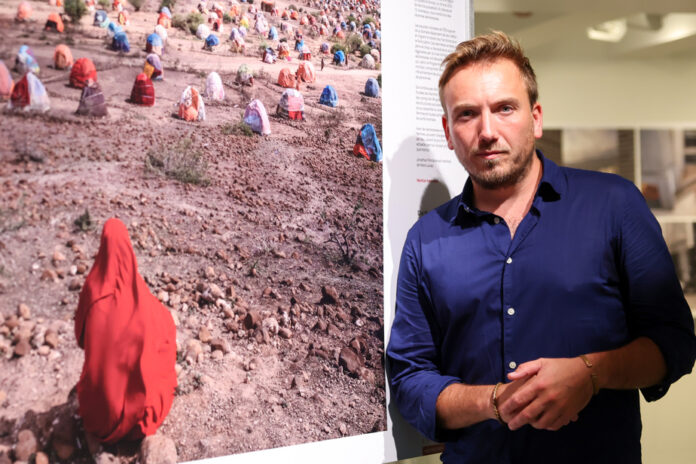From the war in Ukraine to the repression in Iran, passing through the violence in the territories occupied by Israel or the Philippines, without forgetting the major upheavals caused by climate change, the selection of photographs presented at Bonsecours Market as part of the World Press Photo testifies to the great vulnerability of humans.
An overview of the photographs selected from the approximately 60,000 images submitted to the World Press Photo competition, the equivalent of the Oscars in the world of photojournalism, is enough to realize how much the state of the world is deteriorating from year to year. . On all the plans. Political, economic, social and environmental…
The actress Magalie Lépine-Blondeau, spokesperson for the expo, agrees that a large number of photos on display testify to the fragility of ecosystems, even if it is not an imposed theme. “The world is changing at a speed it has never seen before, so most countries are feeling the impacts of these changes,” she told La Presse.
As part of this exhibition, he was offered carte blanche to exhibit his own photos. Which she did by drawing on her travel albums from the last 15 years.
“I wanted there to be human beings in my photos,” she continues. Because I find that photos like trips, the moments that remain are those that we share. Moments that are immortalized because they are linked to a human experience. I have a connection, however tenuous, with each of the people who have been photographed. »
Present Tuesday at the inauguration of the exhibition, the French photoreporter Jonathan Fontaine won an honorable mention for his photo entitled The ultimate journey of the nomad. The man who began his young career as a photographer by taking pictures of chefs’ dishes decided about ten years ago to embark on photojournalism by going to Rohingya refugee camps in Bangladesh.
His award-winning photo was taken in May 2022 in Qolodo camp, near Gode, Ethiopia. We see a young girl from behind, Samira, 16, who observes the camp of her family, which brings together around 3,000 people.
“This series deals with the impact of climate change on nomadic communities,” says Jonathan Fontaine.
Most nomads from Ethiopia and Somalia today find themselves in displacement camps, like the family of Samira, whom Jonathan Fontaine met.
Other photographs bear witness to these major climatic upheavals. Examples include the drying up of the Tighmert oasis in Morocco; the decrease in the flow of the Colorado River, which forces the authorities to provide water to the bees by means of troughs; or, in a rare, more positive register, to an offshore wind farm, in an effort to transition to carbon neutrality.
There is obviously a whole section reserved for the war in Ukraine, which marked the last year, with several (heartbreaking) photos of Evgeniy Maloletka. We think, among other things, of his series on the siege of Mariupol, including the airstrike on the maternity ward of a hospital in the city, where we can see a pregnant mother on a stretcher, who gave birth to a dead baby. born, before dying itself…
There are few happy moments in this exhibition, apart from a few portraits of Magalie Lépine-Blondeau, these swimmers facing the wind farm or this photo of Argentines jubilant after their victory at the World Cup in Qatar. A welcome breath of fresh air.
You will also be able to see the exhibition of the finalists of the Antoine-Desilets prizes awarded each year by the Professional Federation of Journalists of Quebec (FPJQ). It displays photos from the Arts and Culture, Daily Life, Issues and Society, Sports and Portraits categories, in which we also find photographers from La Presse.















